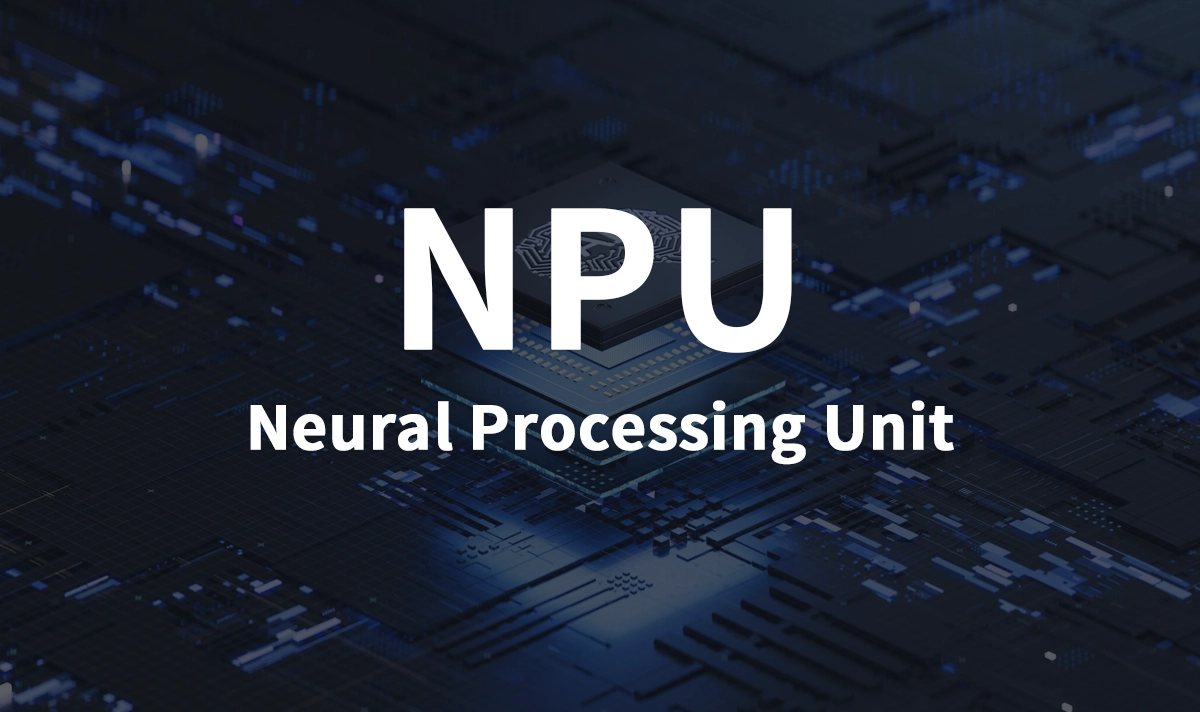
Artificial intelligence has shifted rapidly from cloud-only execution to on-device and edge computing. A key technology enabling this shift is the NPU — Neural Processing Unit, a dedicated AI accelerator designed to efficiently run neural-network inference on smartphones, IoT devices, automotive platforms, and industrial systems.
While CPUs and GPUs can process AI workloads, modern systems are increasingly architected with specialized neural engines to achieve better latency, energy efficiency, and privacy-preserving AI compute. This article explains what NPUs are, how they differ from CPUs/GPUs/TPUs, and where they fit in next-generation computing.
1️⃣. What Is an NPU (Neural Processing Unit)?
Purpose-Built AI Compute Engine
An NPU (Neural Processing Unit) is a domain-specific processor optimized for neural-network computations — particularly matrix multiplication, convolution operations, and activation functions. NPUs accelerate inference workloads such as computer vision, audio processing, natural language tasks, and sensor fusion.
Core Architectural Traits
Parallel compute units optimized for tensor math
On-chip memory to reduce data-movement overhead
Low-precision arithmetic (INT8 / INT4 / BF16) for higher efficiency
Dedicated pipelines for common neural layers and operators
In essence, an NPU enables real-time, low-power AI processing close to where data is generated.

2️⃣. Why NPUs Matter for Modern AI Systems
Key Advantages
Benefit | Description |
|---|---|
High energy efficiency | More AI operations per watt than CPU/GPU |
Low inference latency | Real-time response for safety-critical AI |
Privacy & security | Data processed locally, not sent to the cloud |
Offline intelligence | AI functions without internet access |
Typical NPU Capabilities
Image segmentation & object detection
Speech recognition & on-device translation
Sensor analytics for robotics & wearables
Driver-assist perception pipelines in vehicles
3️⃣. NPU vs CPU vs GPU vs TPU

Component | Purpose | Strength | Typical Location |
|---|---|---|---|
General compute | Control logic & OS tasks | Universal | |
Parallel compute | Training & graphics | Cloud, PC, edge | |
NPU | Neural inference | Low-latency, efficient AI | Mobile, IoT, edge devices |
Tensor compute | Large-scale training/inference | Cloud (Google) |
Key difference:
GPU = high-flexibility, high-throughput compute
NPU = fixed-function, high-efficiency neural compute
4️⃣. How Does an NPU Work?
Key Components
Tensor compute units
On-chip SRAM / unified memory
DMA and data-reuse pipelines
Quantization and activation engines
Neural control logic
Supported AI Workloads
Image recognition & object detection
Natural language processing
Voice and speech recognition
Sensor fusion for robotics and vehicles
Generative AI and local vision processing
Many NPUs also support INT8, FP16, and mixed-precision arithmetic for higher throughput.
5️⃣. Common Devices Using NPUs
Segment | Examples |
|---|---|
Smartphones | Apple Neural Engine, Qualcomm Hexagon DSP, Kirin NPU |
Edge AI Gateways | Nvidia Jetson, Intel Movidius VPU |
Industrial Systems | Smart PLCs, industrial cameras |
Automotive | ADAS, autonomous driving SoCs |
Consumer | Smart speakers, AR/VR glasses, robots |
6️⃣. NPU & Edge Networking — Why Connectivity Matters
Edge AI systems often integrate network interfaces to stream data, update models, or communicate decisions.
Reliable wired networking is widely used in:
Industrial automation
AI vision systems (PoE cameras)
Smart access points & IoT hubs
Edge servers and gateways
RJ45 MagJacks for AI Edge Devices
For AI gateways and embedded computing modules, integrated RJ45 connectors provide:
Stable Ethernet connectivity
PoE/PoE+ power for cameras and sensors
EMI shielding and signal integrity
Compact modular design
Example features:
10/100/1000Mbps Ethernet support
PoE options for smart edge devices
Designed for embedded and networking systems
7️⃣. Conclusion
NPUs are redefining computing architecture by enabling fast, power-efficient AI inference at the edge. As more systems run neural workloads locally, NPUs will sit alongside CPUs and GPUs as a core component in modern processing pipelines.
From smartphones to smart factories, the Neural Processing Unit is enabling a new era of real-time, secure, low-latency AI deployment.


